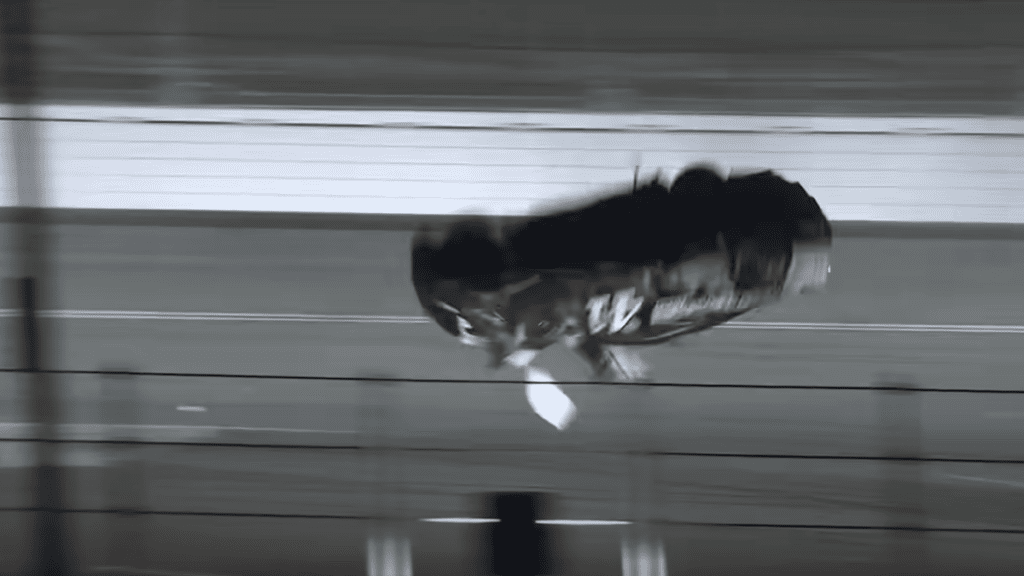It's Time For NASCAR To Rethink Superspeedway Racing

This weekend, the Coke Zero Sugar 400 at Daytona International Speedway marked the final NASCAR Cup Series race before the beginning of the Playoffs, where drivers will compete for a championship. It was also a race marred by some nasty wrecks for Ryan Blaney — who was speared into the outside wall — and Ryan Preece — who was sent into a spin that lasted for a full eight seconds. It begs the question: should NASCAR rethink superspeedway racing?
Racing Tech: Explaining NASCAR’s New Skew
First came Blaney’s wreck. Drivers Ty Gibbs and Christopher Bell made contact, which resulted in a tap to the rear of Blaney’s car that hooked him to the right. He made direct front-end contact with the wall in a crash that proceeded to wipe out a significant portion of the field. Blaney was able to walk away thanks to innovations like SAFER barriers and HANS devices, but some fans on social media were quick to note that the wreck was reminiscent of the one that claimed the life of Dale Earnhardt Sr. Blaney, by contrast, was able to walk away freely.
Ryan Blaney evaluated and released after wreck
Later in the race, Ryan Preece was racing near the front of the field when he was bumped by another car while drafting in the outside lane. His Ford spun into traffic and clipped the grass from a sideways angle. It’s still a little unclear how exactly it happened, but Preece’s car tipped sideways, which allowed air underneath the car all at once. The No. 41 was then launched into the air, flipping a stunning 10 times for eight consecutive seconds before it finally came to rest.
Ryan Preece’s No. 41 flips in closing laps at Daytona; SHR driver climbed from car
Preece was able to leave the car under his own power and was taken to a local hospital for observation. As of this moment, we know he’s okay, but the full extent of his injuries haven’t been released.
Of course, it’s entirely possible to see these two Cup Series wrecks and come away with the opposite conclusion, that NASCAR is safer than it’s ever been. That is, for example, the takeaway by The Daytona Beach News-Journal, which lauds the fact that the Cup cars are safer than they’ve ever been because two nasty crashes took place, but both drivers were able to walk away relatively unscathed.
That kind of attitude, though, reeks of complacency. It’s fantastic that such ferocious wrecks could happen — that a car could flip through the air multiple times — without a grievous injury to the driver, but spectacular wrecks are not a good thing. We should take a moment to appreciate the fact that drivers can emerge from such a wreck intact, but we shouldn’t wait around for the wreck that kills someone or ends a career. Combining multiple rows of drivers running nose-to-tail in hot pursuit of a great regular season finish on a massive race track is a recipe for disaster.
In 1992, Davey Allison was engaged in a similarly nasty flip at Pocono, from which he walked away. Dale Earnhardt Sr.’s 1996 crash at Talladega resulted in a broken collarbone and dislocated sternum; he too walked away, but with injuries that lingered for years. Looking back, it’s easy to see how lucky we were that these legendary drivers were able to sustain brutal impacts and continue on with their careers — but we shouldn’t go on hoping that crashes like this can continue into an era of newer, faster cars, especially after 2022 brought with it so many safety concerns regarding the introduction of NASCAR’s Next-Gen machines.
What it takes to address these issues I leave up to NASCAR — but now is the time for the series to address issues of safety, before it’s too late.



